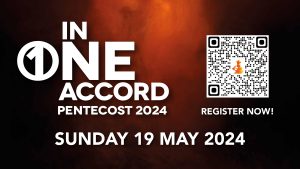As the Passover starts this evening, we found this great article from One for Israel to tell us a bit more about the significance of Passover.
Second to saving the world at Calvary, I think that the Passover miracle is God’s favorite. He talks about it often in Scripture, and made Passover month the beginning of the whole year (Exodus 12:2). He even defines Himself by the event: At the beginning of the ten commandments He introduces Himself like this: “I am the LORD your God, who brought you out of Egypt, out of the land of slavery”.
He used to call Himself “The God of Abraham Isaac and Jacob”, or “I AM” up to this point… But “The One who brought you out of Egypt” is what He calls Himself repeatedly from the Exodus onwards, literally hundreds of times. God is passionate about the whole Passover saga, and the more we dig into the story, the more we discover that it’s full of rich beauty, meaning and power…
The Passover miracle is recalled with wonder throughout many of the Psalms, and although many Jewish people see Sinai as the defining moment of the Old Testament, I would venture to say that God sees the Passover as the cornerstone of the story of Israel. As will be explained below, it is the moment in history when the Jewish race became the Jewish faith. Plus, it is a huge neon sign pointing to the coming release which would be bought with the blood of another spotless lamb – our Savior Jesus.
THE GOD OF FREEDOM
I love the fact that our God is all about freedom; he freely gave everyone freedom to choose at every stage in the Passover story described in the book of Exodus. Even though he famously hardened Pharaoh’s heart, it was after some serious choices on Pharaoh’s part to harden his own heart first.1 God just consolidated his free choice.
He also gave freedom to His people, Israel, about whether to go along with the plan or not. They were not rescued from the Angel of Death by force—He gave an “opt in” clause: to have death pass over your house, you must sacrifice a lamb and daub its blood on your doorframe. This was an act of faith. It was an active response to a command of God, which had a promise… and all who believed it was true and acted accordingly were saved. That means that those who escaped from Egypt had freely chosen to obey God and follow Him by faith—not just because of their ancestry.
This is the moment that the people of Israel became a faith community.
As we mentioned, the ten commandments are introduced by God’s reminder that he loves to set slaves free, and the very first command when he subsequently lays down the rest of the Torah is this:
“These are the laws you are to set before them: If you buy a Hebrew servant, he is to serve you for six years. But in the seventh year, he shall go free, without paying anything.” (Exodus 21:1-2).
What a strange subject with which to start a new code of government, spiritual life and ethics! But God is determined that His people should not be in slavery—they should be free. This is the message of Passover. That is what the exodus was all about. God is serious about making His people free.
GOD-APPOINTED MEMORY AIDS
Remembering is very important to God. He jogs our memory all the time in the Bible, urging us, “Remember!” I think one of Satan’s best strategies is dimming our memory. If we remember what God has done, what He has said and who He is, we can have faith in Him today and trust for tomorrow. The opposite is often true as well. The Passover Seder meal is a multi-sensory teaching experience, instituted by God Himself, in order to prevent the people from forgetting. It involves sight, smell, taste and touch, and was designed to teach generation after generation the amazing story, and to keep it alive in the Jewish collective memory.
Today the family celebration is based around four cups of wine and a “haggadah” or “telling” which is like an order of service. There are different ideas about what each of the four cups represents, but generally the first cup is about sanctification, and being set apart for God, the second is the time to tell the story, the third is drunk after the meal, when Jewish people usually say grace for their food, and the last one is “hallel” or praise, after the songs and Psalms of thanksgiving.
Each item of food on the table symbolizes something in the story—the dry, unleavened matzah bread represents the dryness of slavery, in contrast with the richness and blessing of wine, which represents freedom. It is also commonly believed that yeast represents sin, and that this is a time to do away with all yeast, and all sin. The bitterness of the bitter herbs speak of the suffering, and so on. Each aspect of the evening helps the Jewish people to remember the miracles God did for them and even to re-live them. It is not so much about recalling some historical event lost in the sands of time, as actually re-living the story and making it part of life today… and hope for the future.
It was this very Passover seder that was the last supper that Yeshua ate with His disciples, in the traditional Jewish way (read more about the first Passover). It was unleavened, passover bread that He broke, when he told His disciples to “do this in remembrance of me”, and it was one of the four cups of wine that He drank when he spoke of it representing His blood. We drink it to remember the blood that bought our freedom, and caused death to “pass over” us as well. He is in every way the embodiment and fulfillment of the Passover story. And we will remember what He did for us each time we eat the bread and drink the cup.
Read more about the four stages of liberation
Source: One for Israel




